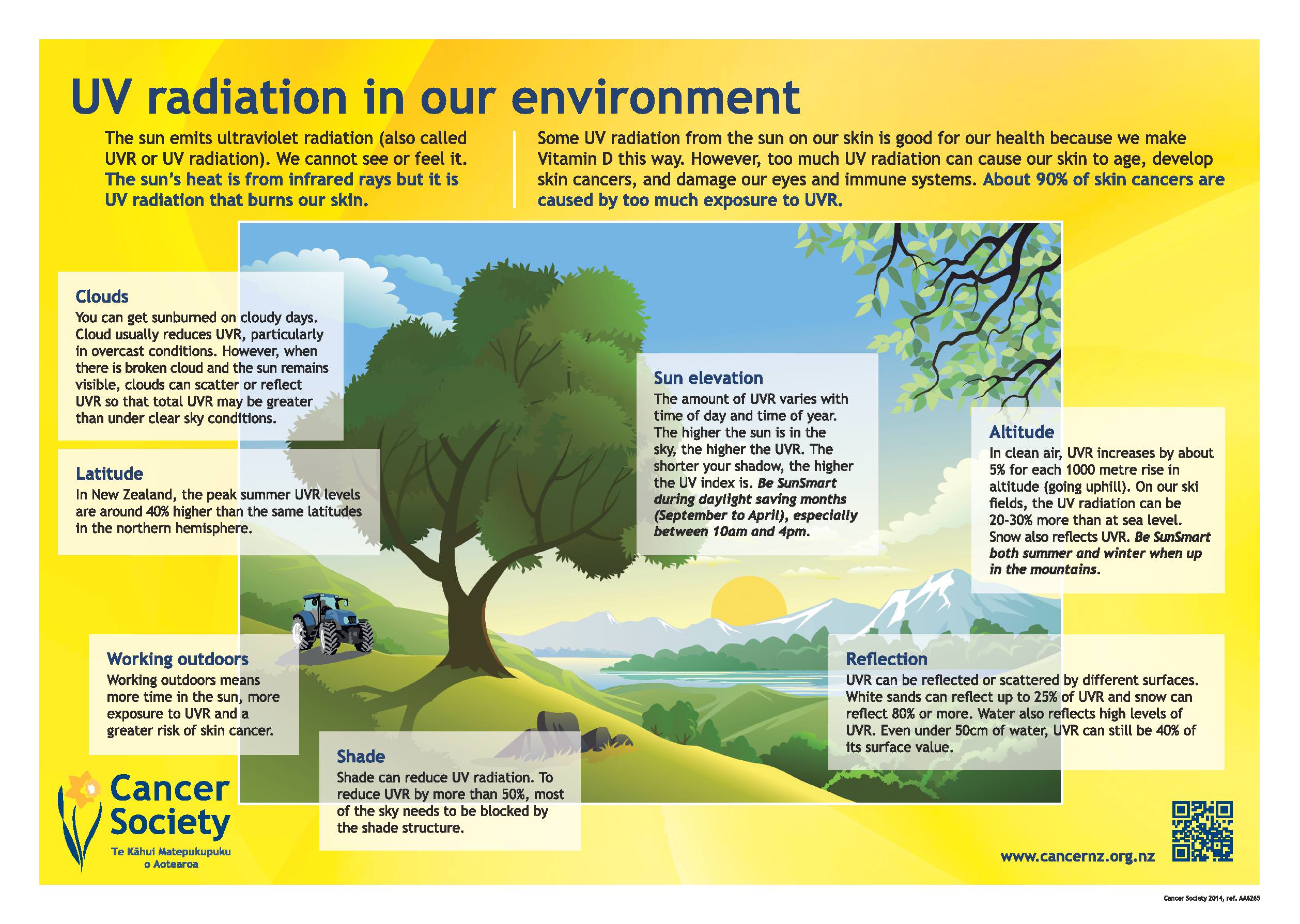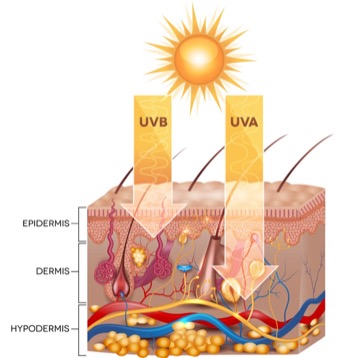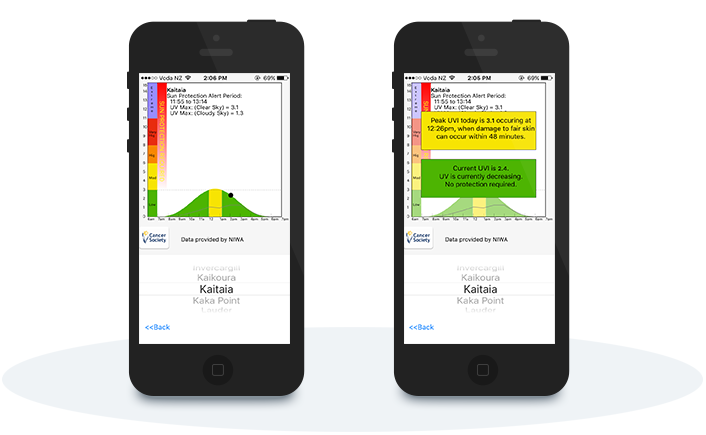UV radiation
Most skin cancers are caused by too much exposure to ultraviolet (UV) radiation from the sun.
The sun sends out different types of radiation:
- sunlight (that you can see and feel as heat)
- infrared radiation (that you can feel as heat)
- UV radiation (that you cannot see or feel).
You need to be careful when it’s cool (and/or cloudy) outside from September to April. When it’s cool it means there’s less infrared radiation but not necessarily less UV radiation. You can still get sunburnt on cool and cloudy days.

Types of UV radiation

There are three types of UV radiation from the sun - UVA, UVB and UVC. All can cause skin and eye damage.
- UVA radiation goes deep into the skin. It can cause long-term damage like wrinkles, blotchiness, sagging and skin cancer
- UVB radiation gets into the top layer of skin and can cause sunburn, skin damage and skin cancer.
- The ozone in the atmosphere absorbs most UVB from reaching the earth's surface.
- UVC is the most dangerous type of UV radiation.
- Ozone and oxygen in the Earth’s atmosphere absorb all UVC so none reaches the earth's surface. However, there are other sources of UVC, such as in arc welding, which workers need to protect themselves from.
Levels of UV radiation
Levels of UV radiation from the sun are always changing.
In general, in New Zealand, UV radiation is damaging to skin and eyes from September to April (the daylight saving months), when UV radiation levels are higher.
The Sun Protection Alert tells you the time each day when you need to protect your skin and eyes from UV radiation.
UV radiation is affected by:
- time of day
- time of year
- cloud cover
- altitude
- reflection (for example, off snow and ice)
- closeness to the equator.
In New Zealand, always protect skin and eyes from September to April, when you're in the mountains, out on the water, or around snow and ice - Slip, Slop, Slap and Wrap.
Read more about UV radiation on NIWA’s website.
NIWA provides UV index (UVI) forecasts throughout the year.
UVNZ app
You can check UV data for your location using the free UVNZ app. This app provides UVI forecasts for locations across New Zealand. It uses NIWA data and is supported by the Cancer Society.
Visit NIWA’s website to download the app for both iPhone and Android phones.

For further information about UV (ultraviolet) radiation, and how it can affect health, take a look at the UV exposure indicators on the Massey University website.